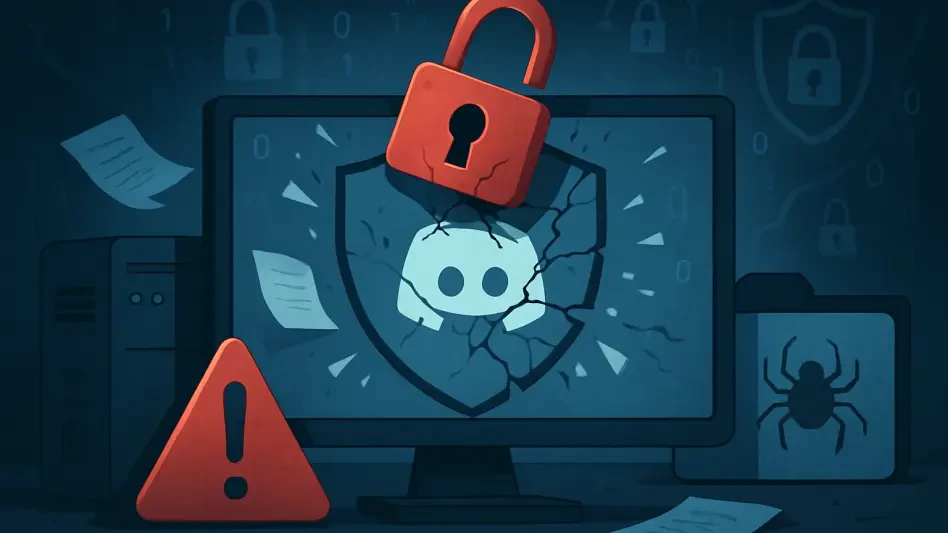In an era where cyber threats are becoming increasingly sophisticated, a chilling trend has emerged with state-sponsored groups targeting critical industries through deception and technical prowess, posing significant risks to national security. One such threat actor, known as Subtle Snail, also tracked as UNC1549 and linked to the Unyielding Wasp network with ties to Iran, has mastered the art of impersonation to infiltrate high-value targets. Since at least mid-2022, this group has focused on European telecommunications, aerospace, and defense sectors, using meticulously crafted social engineering tactics to pose as HR representatives. By exploiting trust and human vulnerabilities, they trick employees into divulging sensitive data, often with devastating consequences for organizational security. This alarming strategy not only highlights the evolving nature of espionage but also underscores the urgent need for robust defenses against such insidious attacks.
Unveiling the Deceptive Tactics
Crafting a Facade of Legitimacy
Subtle Snail’s approach to espionage begins with an intricate web of deception designed to appear authentic to unsuspecting victims. The group meticulously creates fake LinkedIn profiles, presenting themselves as hiring managers from reputable companies in targeted industries. To bolster their credibility, they establish fraudulent job advertisement domains that closely mimic legitimate corporate websites, such as telespazio-careers.com and safrangroup-careers.com. These efforts are far from random; extensive reconnaissance ensures that their outreach is tailored to specific individuals, often researchers, developers, or IT administrators with access to critical systems. By leveraging the inherent trust people place in professional networking platforms and job offers, the attackers position themselves to extract valuable information, including login credentials, under the guise of recruitment processes. This calculated manipulation of human psychology reveals a deep understanding of social engineering principles, making their campaigns particularly effective and difficult to detect at first glance.
Targeting High-Value Individuals
Beyond the creation of convincing facades, Subtle Snail hones in on high-value targets with precision, exploiting their access to sensitive data for long-term espionage goals. The group’s focus on employees in telecommunications, aerospace, and defense sectors is no coincidence; these industries are often central to national security and economic stability. By engaging with individuals through personalized messages and seemingly legitimate job opportunities, the attackers build rapport and lower defenses over time. Once trust is established, victims are often directed to download files or click on links that initiate the compromise of their systems. The success of these tailored attacks, which have reportedly affected 34 devices across 11 organizations since mid-2022, demonstrates the group’s ability to identify and exploit specific vulnerabilities within an organization. This strategic selection of targets underscores a broader trend among state-sponsored actors to prioritize quality over quantity in their espionage efforts, aiming for maximum impact with minimal exposure.
Technical Sophistication Behind the Attacks
Deploying Advanced Malware Tools
At the heart of Subtle Snail’s technical operations lies the deployment of a custom variant of the MINIBIKE backdoor, a malware designed for stealth and persistence. This tool communicates with command and control (C2) infrastructure through Azure cloud services, a choice that helps evade traditional detection mechanisms by blending malicious traffic with legitimate cloud activity. Initially, the malware samples boasted low detection rates across antivirus software, thanks to advanced obfuscation techniques and the misuse of code signing certificates from Insight Digital B.V., a Dutch company, to appear trustworthy. The primary method of infection involves DLL sideloading, a technique that exploits Windows’ dynamic-link library search order to execute malicious code discreetly. Victims are often lured into running executable files from ZIP archives with innocuous names like Application.zip or TimeTable.zip, which then load malicious DLLs mimicking common system libraries such as iumbase.dll or dwrite.dll, tailored specifically for 64-bit systems using Microsoft Visual C/C++.
Executing Data Exfiltration and Persistence
Once the initial breach is achieved, Subtle Snail’s operations shift toward systematic data exfiltration and maintaining long-term access to compromised systems. The MINIBIKE backdoor plays a critical role in this phase, collecting unique system identifiers and transmitting them to the C2 server to facilitate further malicious activities. These activities often include keylogging, credential theft, and checking domain names to map out network structures, all while remaining undetected through persistent DLL sideloading techniques. The group’s focus on gathering proprietary technologies, customer databases, and critical network configurations reveals a clear intent to support geopolitical espionage objectives. Their ability to develop victim-specific malware further complicates defense efforts, as each attack is customized to exploit the unique environment of the target. This level of technical sophistication, combined with the strategic use of trusted services and processes, highlights the formidable challenge posed by such threat actors to modern cybersecurity frameworks.
Implications for Critical Industries
Evolving Nature of Cyber Threats
The sustained campaign by Subtle Snail reflects a broader shift in the landscape of cyber threats, where state-sponsored actors increasingly target critical infrastructure with innovative and adaptive methods. Their focus on sectors like telecommunications, aerospace, and defense is driven by the strategic importance of these industries to national interests, making any breach a potential risk to security and economic stability. The group’s ability to bypass traditional security controls through the abuse of trusted processes and cloud services, such as Azure for C2 communication, illustrates a growing trend of adversaries leveraging legitimate tools for malicious purposes. This evolution demands a rethinking of defensive strategies, as static measures are often insufficient against attackers who continuously refine their tactics. The success of these campaigns, evidenced by multiple compromises over the past few years, serves as a stark reminder of the persistent and dynamic nature of modern cyber espionage.
Strengthening Defenses Against Sophisticated Threats
Looking back, the impact of Subtle Snail’s operations revealed significant gaps in organizational preparedness against blended social engineering and technical attacks. Their dual approach, combining human manipulation with advanced malware like the MINIBIKE backdoor, had already compromised numerous devices by the time their tactics became widely known. Reflecting on these incidents, it became evident that industries vital to national interests needed to prioritize employee training to recognize phishing and impersonation attempts. Implementing multi-factor authentication and advanced endpoint detection systems also proved essential in mitigating risks. Moving forward, organizations must invest in continuous monitoring and threat intelligence sharing to anticipate and counter such sophisticated threats. By fostering a culture of vigilance and adopting proactive security measures, businesses can better safeguard sensitive data against the evolving strategies of state-sponsored actors, ensuring resilience in an increasingly hostile digital landscape.








